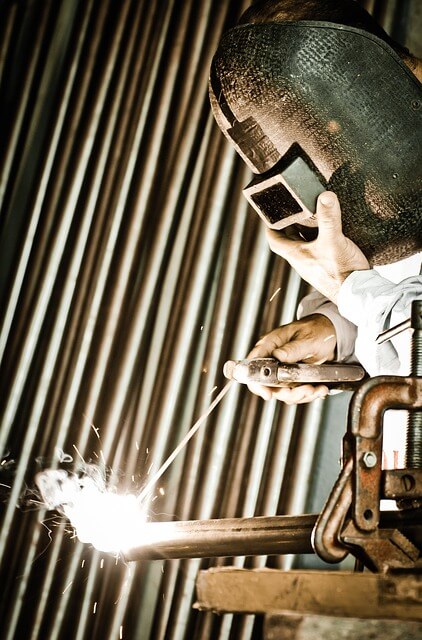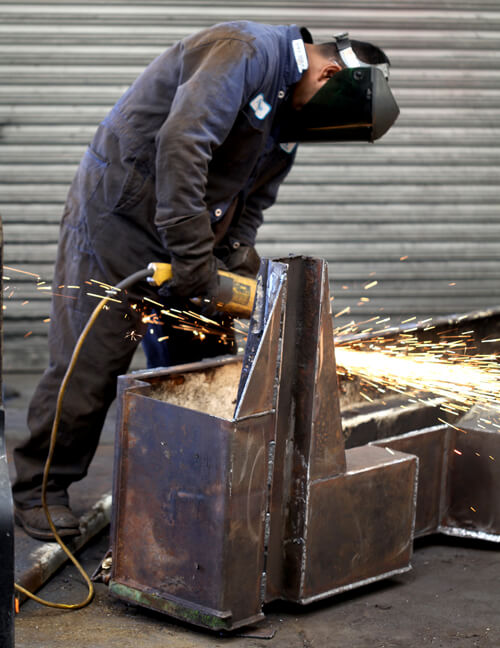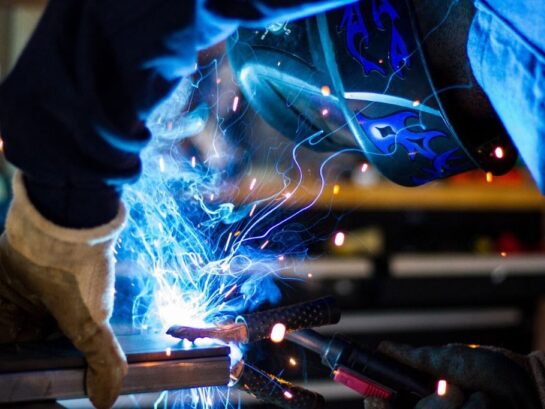Welding is the process of fusing 2 metals while fabrication is the process of cutting, bending, and assembling of metals to form a specific structure.
Both of these methods belong to the same industry. And like any other industries, the field of welding and fabrication has its share of industry-specific terms which an average may not immediately understand.
So if you are a client who has some questions about industrial welding, fabrication, or other related skills, or if you’re interested in pursuing a career in metalworks, then here are some of the commonly used terms that you need to know:
Note: For proper guidance, the list of terms is divided into 2 sections, one for welding and the other for fabrication.
Let’s begin…
Commonly Used Terms In Welding

Gas – It’s a term used to describe a procedure called Gas Welding. It requires a combination of acetylene and gas to produce a flame that is so hot to melt metal surfaces. Gas can be used to melt soft metals like bronze, aluminum, copper, and certain types of steel. Moreover, it is a delicate process that requires greater knowledge as compared to conventional industrial welding.
MIG – It’s an acronym for the Metal Inert Gas method of welding, although sometimes it’s also called GMAW (Gas Metal Arc Welding). This is the most commonly used type of welding in both private and industrial settings. In this method, a rod of steel is fed into the gun and then it is melted to form a bead and applied directly to the 2 metal surfaces.
TIG – It’s an acronym for Tungsten Inert Gas, although sometimes it’s also called GTAW (Gas Tungsten Arc Welding). This welding procedure differs from other types of welding since it uses a non-consumable tungsten rod. In other words, the rod does not melt with the metal once the welding is done. And it can also be used to bend metal, which both common in welding and fabrication works. Although TIG produces a cleaner result, it is also the most expensive type of welding and the most difficult to master as well.
Arc/Stick – It is named after the idea of electricity passing through the welding rod and the metal surface. Once the rod touches the metal, it creates heat that is needed to join the pieces together. Arc welding is powered by AC or DC and it does not involve using gas as compared to other welding procedures.
Commonly Used Terms In Fabrication

Punching – This refers to the method of forming metal using a punch machine. The metal component is mounted to a die set or a slide for proper alignment.
Shearing – Also called die cutting, it is simply the process of cutting metals. Shears are used during the preliminary process to prepare the metal for stamping or CNC presses then a cutting force is applied perpendicular to the component to cause the metal to break.
Blanking – Is a type of shearing process where a punch and die is used to form a piece of metal into a predetermined shape. Likewise, it is also used for cutting larger sheets of metal into smaller pieces.
Embossing – It is a metal-forming process that creates raised (or sunken) designs on the surface of metal strips or sheets. This is done by pressing the metal component between rolls to produce a desired pattern. Ideally, the thickness of the embossed area should not be different from the rest of the surface.
Press Barking – In this process, a press bark machine is used to bend metals. The sheet is clamped using a pair of punch and die and then using the machine, the sheet is then bent into predetermined shape.
MIG and GTAW – And lastly, these processes are both used in industrial welding and fabrication have the same definitions as the ones being mentioned above.

